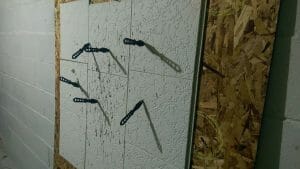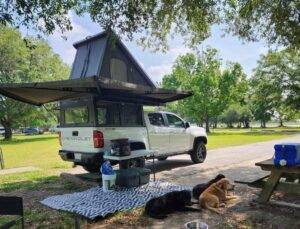
If you are new to buying throwing knives, you will want to know what to look for in a throwing knife before you invest in purchasing it. While different people will prefer different throwing knives, there are some key things that everyone has to consider. In this article, we will focus on showing you what these factors are.
Key Things to Consider When Purchasing a Throwing Knife:
 1. The Type of the Knife
1. The Type of the Knife
Basically, there are 4 types of throwing knives. These are:
- Blade-heavy knives – If you are a beginner, this should be your ideal throwing knife. Its blade is the heaviest part. Its throwing distance exceeds 5 meters.
- Handle-heavy knives – This is a good throwing knife for advanced knife throwers. The knife’s handle is the heaviest part. You can also throw this for distances over 5 meters.
- Balanced knives – These are perfect for both advanced knife-throwers and beginners. The weight is distributed equally on both the blade and handle. This will work for shorter distances.
- Kunai knife – This knife requires extremely advanced skills to use. It has its origin in Japan.
When selecting your knife, you need to consider how good you are at throwing knives and the distance you want to throw your knife. For example, if you are a beginner who prefers throwing knives over long distances, the blade-heavy knife is an ideal choice. It’s also a good idea to look into tactical shooting knives and to give you more insight into the different options.
2. The Handle-to-Blade Weight Ratio
Blade-to-handle weight ratios do vary from knife to knife. Different knives will have different fulcrums or what some people prefer to call a center of balance.
Some knife throwers will argue that the best throwing knives should have their center of balance in the middle while others will argue that the lack of balance gives the knife momentum when it is thrown. The decision of whether to purchase a knife that has a perfectly centered fulcrum or one that lacks balance will depend on personal preference. What we would advise here is that you try experimenting with different knives to see which one feels right and also suits your style of throwing.
3. The Total Length and Weight of the Knife
The weight and length of a good throwing knife are supposed to be proportional. If a longer knife is light, it will wobble or float. This is simply because as the knife’s length increases, air pressure affects it more. If you want a long but light knife to be stable throughout the whole throwing distance, you will have to throw it harder. This will end up putting a lot of strain on your arm.
The preferred weight-to-length ratio is 1 ounce per inch. That is, if your knife is 12 inches long, it is supposed to weigh 12 ounces. When the knife becomes longer, a bigger ratio is preferred. For example, a knife whose length is longer than 12 inches may use the ratio of 1.25 ounces per inch.
4. To Choose a Great Knife, You Have to be Careful
When choosing a throwing knife, don’t just pick the first knife you find in the market. Do your homework to know whether the knife fits all your needs. Ask yourself, is the knife heavy or light enough? Is its fulcrum location ideal for my throwing habits? Is its length-weight ratio okay? Remember that going for the cheapest knife is not always a good idea. In most cases, the prices indicate the value of the item you are purchasing.








